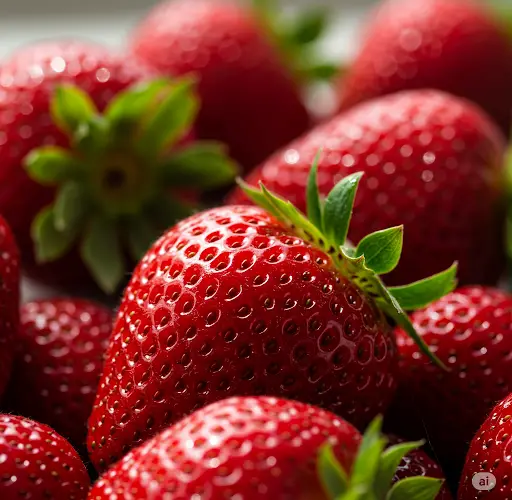Strawberries are one of the most rewarding plants to grow, offering delicious fruit and beautiful foliage. For many gardeners, increasing the number of strawberry plants is an exciting way to expand their garden without buying new plants. Propagating strawberries is not only economical but also allows you to preserve your favorite varieties.
This article covers the best techniques to multiply your strawberry plants successfully, ensuring a healthy, productive patch for years to come.
Understanding Strawberry Propagation
Strawberries naturally propagate through runners—long, slender stems that extend from the mother plant and develop new plantlets at their tips. These plantlets, also known as daughter plants, can root themselves and grow into independent plants.
In addition to runners, strawberries can be propagated by dividing mature plants or growing from seeds, though runners remain the easiest and most effective method for home gardeners.
Method 1: Propagation by Runners
Propagation via runners is the most common and straightforward way to multiply strawberries.
How to Do It:
-
Identify healthy runners: Look for long stems with small plantlets forming at the tips. These plantlets should have visible leaves and tiny roots starting to develop.
-
Prepare the soil: Select a well-drained, nutrient-rich area for your new plants. Lightly till the soil and add compost or organic matter.
-
Pin down the plantlets: Position the runner’s plantlet onto the prepared soil and use a small garden pin, U-shaped staple, or simply press it down so it contacts the soil firmly. This encourages root development.
-
Water regularly: Keep the soil moist but not waterlogged. Roots will form over a couple of weeks.
-
Sever the runner: Once the plantlet has established strong roots and shows independent growth, cut the runner stem connecting it to the mother plant.
-
Care for new plants: Continue watering and feeding the new plants to help them thrive.
This method produces clones of the parent plant, preserving the fruit’s quality and characteristics.
Method 2: Division of Mature Strawberry Plants
Older strawberry plants can become crowded and less productive. Dividing mature plants is another effective way to multiply your crop while rejuvenating the existing plants.
How to Divide:
-
Dig up the plant: Carefully dig around the root ball of a healthy, mature strawberry plant.
-
Separate crowns: Look for natural divisions or separate sections of the root system with their own crown (the central growing point).
-
Replant divisions: Plant each division in well-prepared soil with plenty of organic matter.
-
Water and nurture: Water thoroughly and keep the soil moist until the plants reestablish.
Division is a great way to give your strawberry bed a fresh start and expand your planting area.
Method 3: Growing Strawberries from Seeds
Growing strawberries from seeds is less common for home gardeners because it’s a slower process and may not produce plants identical to the parent due to genetic variation.
However, it can be a rewarding challenge if you want to experiment with breeding new varieties.
Steps to Grow from Seeds:
-
Harvest or buy seeds: Strawberry seeds are tiny and found on the outside of the fruit. You can collect seeds from ripe berries or purchase them.
-
Stratify seeds: Many strawberry seeds require a period of cold treatment to germinate. Place seeds in a moist paper towel inside the refrigerator for 2-4 weeks.
-
Sow seeds: After stratification, plant seeds on the surface of seed-starting mix and lightly press them in. Keep the soil moist and maintain temperatures around 65-75°F (18-24°C).
-
Transplant seedlings: Once seedlings develop a few true leaves, transplant them into pots or the garden.
While this method requires patience and care, it offers the chance to grow unique plants.
Tips for Successful Strawberry Propagation
-
Choose healthy mother plants: Only use disease-free, vigorous plants to propagate from.
-
Timing matters: The best time to root runners or divide plants is late spring to early summer when conditions are warm but not too hot.
-
Soil quality: Strawberries thrive in well-draining soil rich in organic matter. Adding compost improves soil structure and fertility.
-
Sunlight: Ensure new plants receive at least 6 hours of direct sunlight daily.
-
Water consistently: Newly propagated plants need regular watering to establish strong roots.
-
Pest and disease control: Keep an eye out for common pests such as slugs and aphids, and use organic or chemical controls if necessary.
Expanding Your Strawberry Garden Year After Year
By mastering these propagation techniques, you can significantly increase your strawberry patch annually. Regularly propagating runners ensures a steady supply of fresh plants, while dividing mature plants keeps your garden productive and manageable.
Additionally, growing from seeds can add diversity if you’re interested in experimenting with new varieties.
Conclusion
Multiplying strawberry plants is simple with the right methods and care. Propagation by runners is the easiest and most reliable way to increase your plants, while division and seed propagation offer alternative approaches for rejuvenation and variety.
By providing good soil, proper watering, and attention to timing, you can expand your strawberry garden naturally and sustainably. This will allow you to enjoy abundant harvests of juicy, sweet strawberries for seasons to come.



